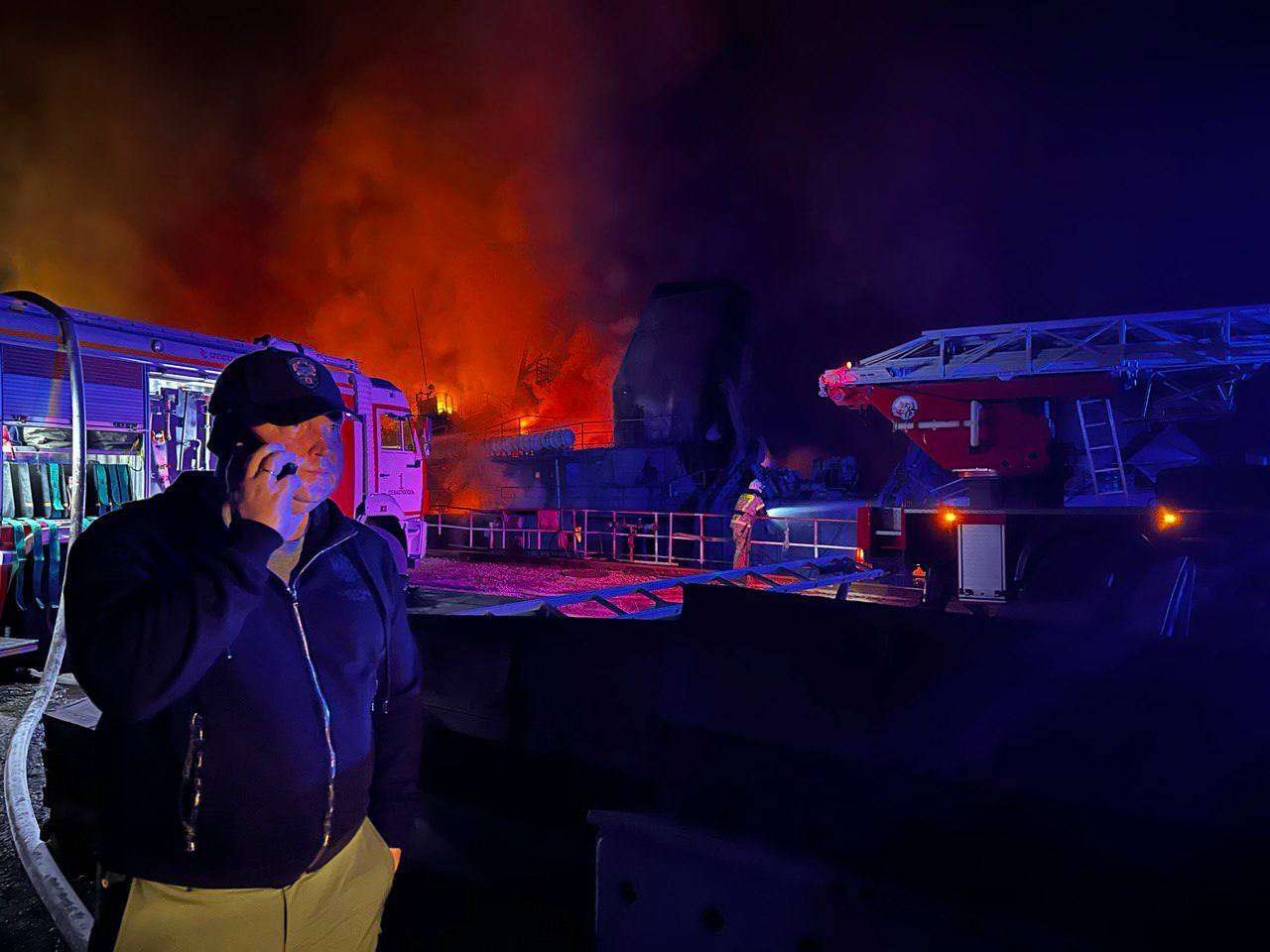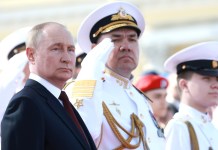Ukraine’s attack on a Russian naval facility in Crimea in the early hours of September 13 reportedly damaged two Russian warships, with a Ukrainian Air Force official hinting at the possible use of UK-supplied Storm Shadow missiles in the operation.
Russia ‘Knocks Out’ Ukraine’s HIMARS, M777s & Other Weapons Made Of Nothing More Than ‘Sewer Pipes’
As per the reports, the attack resulted in damage to a landing craft and a submarine. The attack reportedly involved the use of 10 cruise missiles and three unmanned boats.
The Russian Defense Ministry acknowledged that Kyiv launched an attack on the Sergo Ordzhonikidze shipyard in Sevastopol. This shipyard is utilized by Russia as a repair base for its Black Sea Fleet.
The Ministry added that its air defense forces successfully intercepted and brought down seven of the missiles, while the patrol ship Vasily Bykov managed to eliminate all of the unmanned boats.
However, Russian authorities confirmed that as a result of the attack, two Russian warships sustained damage, and 24 individuals were injured. The videos and images circulating online also depict a large plume of smoke and fire ablaze in the area.

Mikhail Razvozhaev, the Russian-appointed governor of Sevastopol, the largest city on the Crimean Peninsula, has officially confirmed the attack. Razvozhaev said he was present at the location, specifically on the southern premises of Sevmorzavod.
Open-source intelligence (OSINT) researchers and analysts on X, formerly Twitter, have put forth the assessment that the two Russian vessels that incurred damage are likely to be a Russian Kilo-class submarine and a Ropucha landing ship.
Sevastopol has faced multiple missile attacks from Ukrainian forces. This port city holds significant strategic importance due to its role in supporting Russia’s Black Sea fleet, which has its headquarters located there.
In what appears to be a reference to the attack on Sevastopol, Andriy Yermak, the head of the Ukrainian President’s Office, suggested that besides imposing sanctions and limiting the Russian military-industrial complex’s ability to manufacture weapons, it is also crucial to disrupt the logistics of the Russian army.
According to Yermak, without proper logistical support, Moscow will struggle to maintain control over the occupied Ukrainian territory. “The way to victory on the battlefield is to knock out the logistics of the Russians,” Yermak added.
Storm Shadow Used In The Attack?
Kyiv has often directed attacks toward the Russian naval fleet to diminish Russia’s capacity to launch strikes against Ukrainian territory from the sea.
This incident seems to be the latest occurrence in a series of attacks targeting the Russian Navy. Yet, there was no immediate response or official claim of responsibility from Ukraine, which is the usual pattern in such situations.
Russia typically attributes attacks on its territory and occupied regions of Ukraine to Kyiv, while Ukrainian officials usually refrain from making official public comments, although there have been occasional sarcastic remarks from top Ukrainian officials.
However, this time, Ukraine’s air force chief seemed to acknowledge the attack, deviating from the usual response trajectory.
The Ukrainian media reported a message from Nikolay Oleshchuk, which he shared on his Telegram channel. It stated, “In the meantime, the occupiers are being “stormed” and are still recovering from the night battle in Sevastopol, I thank the pilots of the Air Forces of the Armed Forces of Ukraine for their excellent combat work! To be continued.”
Many analysts and journalists based in Kyiv interpreted the message from the Ukrainian official as a possible indication that British-supplied Storm Shadow air-launched cruise missiles may have been employed in the Ukrainian assault on Sevastopol.
A Russian military blogger, Rybar, claimed that the attack on the Sevastopol shipyard was executed by the Ukrainian Air Force, which deployed 10 Storm Shadow/SCALP cruise missiles against the facility.
Rybar alleged that these missiles were launched from the Su-24M aircraft flying over the Black Sea. Rybar further mentioned that air defenses, including a Pantsir-S1 system, successfully intercepted seven of the missiles.
However, three Storm Shadow missiles managed to reach their intended targets: the landing ship Minsk and the submarine Rostov-on-Don, both of which were located in dry docks, sustaining varying degrees of damage.
The EurAsian Times could not independently verify the information. The extent to which damage occurred to the Russian naval assets is also not clear.
The Storm Shadow missiles supplied by the UK have expanded Ukraine’s capability to carry out precise strikes against valuable Russian targets previously out of reach.
Nonetheless, it is yet to be confirmed whether the reports about the use of Storm Shadow appearing on social media are valid. The potential utilization of modified domestically produced Ukrainian missiles cannot be discounted.
- Contact the author at ashishmichel(at)gmail.com
- Follow EurAsian Times on Google News




